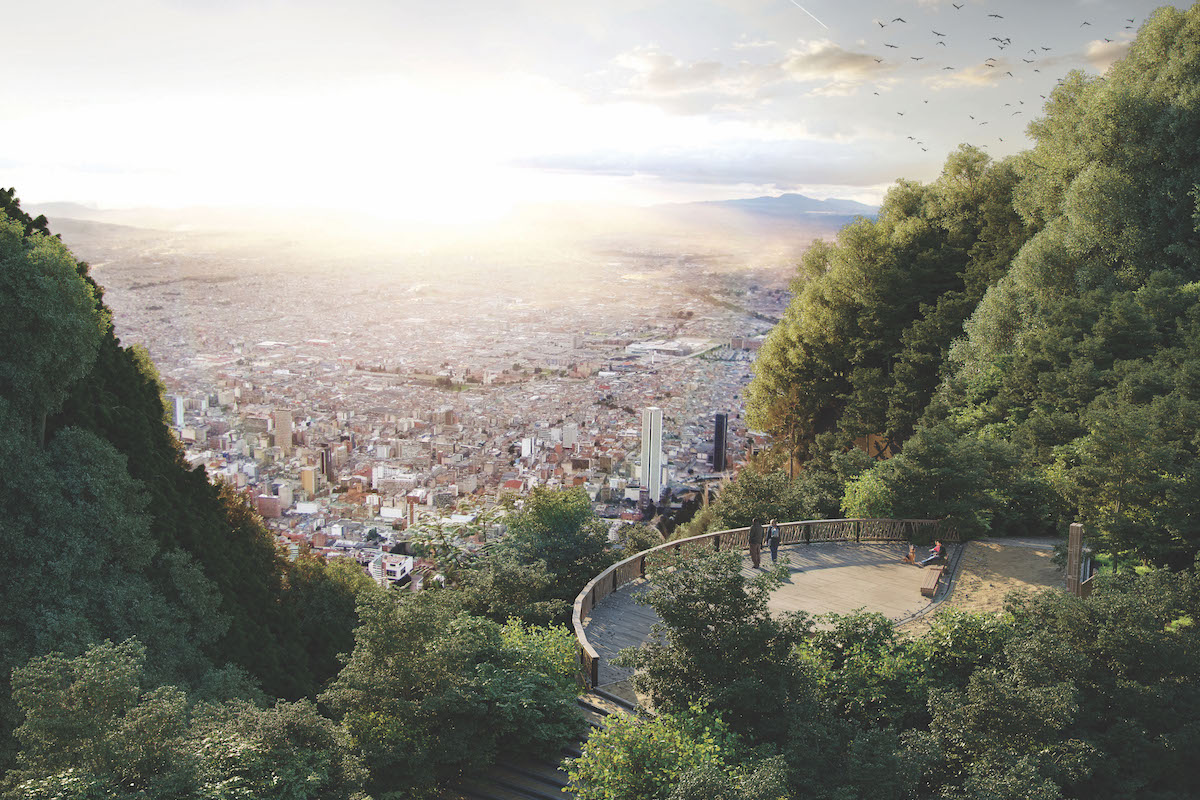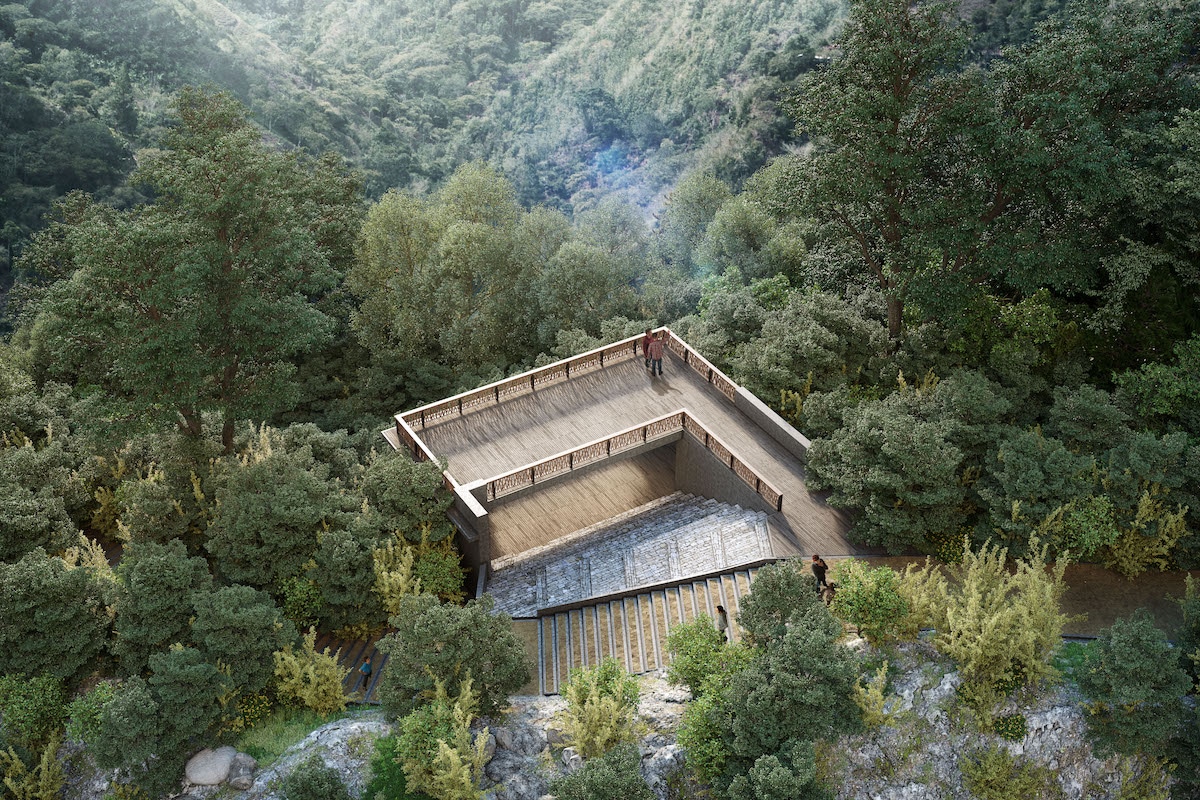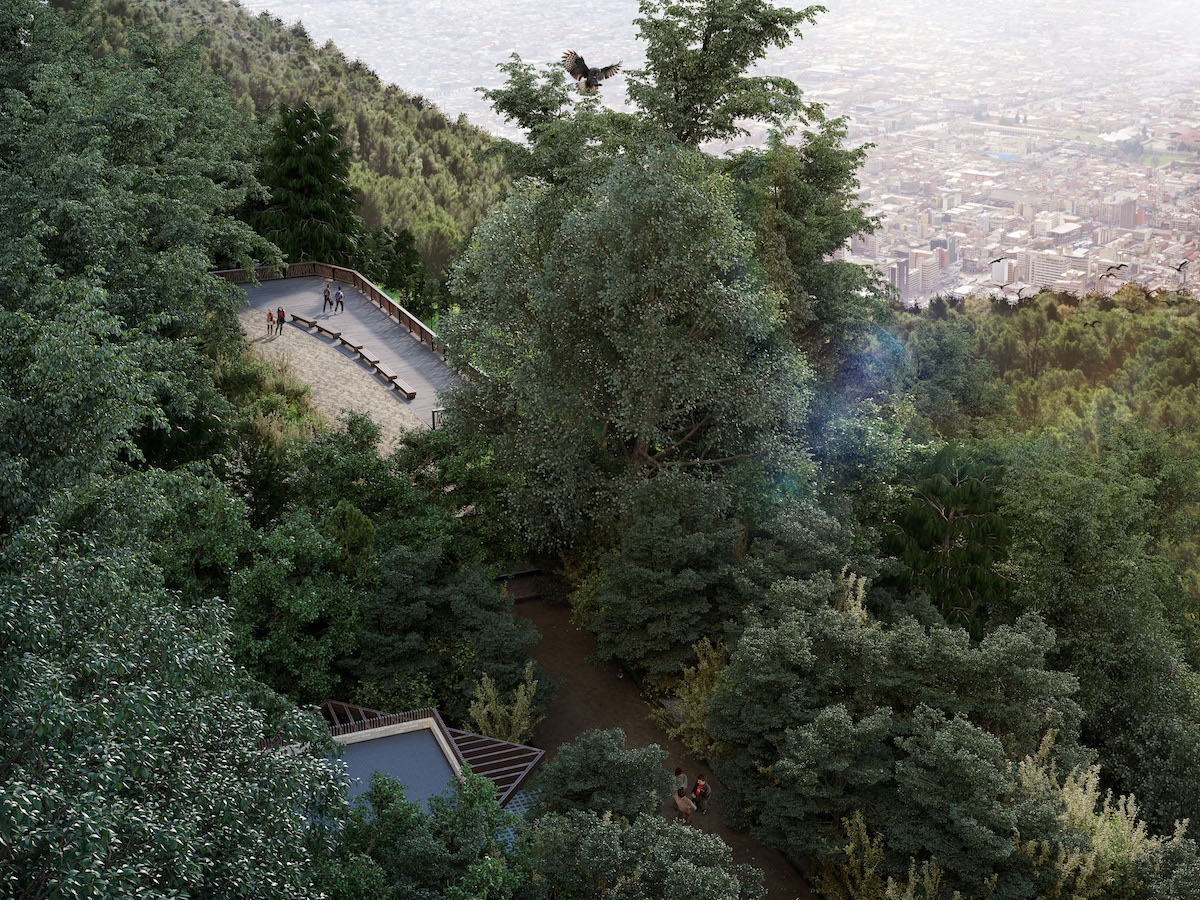
Monserrate is visited by more than 60,000 people on peak days, and a new path will improve the journey for hikers and the environment alike. [Rendering: Courtesy of Rogelio Salmona S.A.]
Monserrate is the focal point of Bogotá, a place of respite on top of the mountains for visitors and locals alike. For many, the journey to Monserrate is a spiritual pilgrimage, as they trek up the hill to observe the Stations of the Cross. While you can reach Monserrate on foot (by many stairs), cable car, or funicular, the foot path is rocky and narrow in places, steep, and frequently crowded as it’s visited by more than 60,000 people on peak days.
But a new path promises to improve the trek, with smooth slopes and a wide path so people can appreciate nature. Construction on the new path to Monserrate is expected to begin this year and take one year. “It’s a large project, a public space in a forest reserve, in the most emblematic hill of the city,” says María Elvira Madriñán, widow of famous Colombian architect Rogelio Salmona. The project was modified considerably and more recently shifted its focus to environmental interpretation.

[Photo: Courtesy of ProColombia]
Madriñán says the project is a long time coming, as it dates back to 1996 with an original concept designed by Salmona and Louis Kopec. “We start from the idea that through the education and active participation of visitors, it is possible to awaken the interest and the respect for the ecosystem. That is an important part of sustainability.”
The new 6-kilometer route will have two covered rest points, restrooms, and seven viewpoints—places to rest as well as learn about the flora and fauna. Much of the project passes over old, rarely used pedestrian paths, so the environmental impact is low. Native flora will be re-introduced with ecological restoration principles without damaging the hill or its existing vegetation.
Madriñán says the existing path was not safe for the number of visitors who walked it regularly. Expansion was proposed by Salmona and others in the earlier project, but when they went to start construction, they found several families living on the hill, and relocating those families took a long time. “When the process was over, there was no longer the political will nor the money to do it,” she says. “They spent 18 years of failed attempts, trying to convince different public and private entities that could be interested in the project, but it was not achieved.”

[Rendering: Courtesy of Rogelio Salmona S.A.]

[Rendering: Courtesy of Rogelio Salmona S.A.]
When officials finally agreed to revive the project, Salmona and Kopec had passed away. Madriñán and engineer Francisco de Valdenebro, who worked on the first project, created a temporary union to get efforts up and running. They looked at the initial plan, but the property’s conditions had changed, and it was necessary to develop a new, longer layout to take advantage of the traces of the roads that used to exist on the hill in order to not extend the environmental footprint.
The new road to Monserrate will join the national park on the north side. You’ll reach the crest of the hill and continue walking along the top of the two hills until you reach the Monserrate sanctuary and join the existing old road. This, in turn, lightens the loads on the hill, as the roads can be used alternatively.

[Rendering: Courtesy of Rogelio Salmona S.A.]
